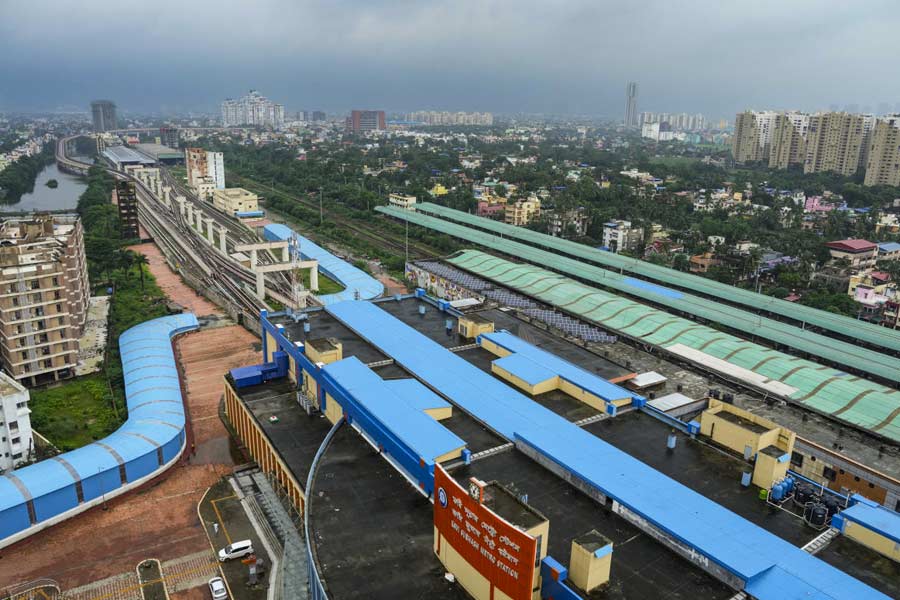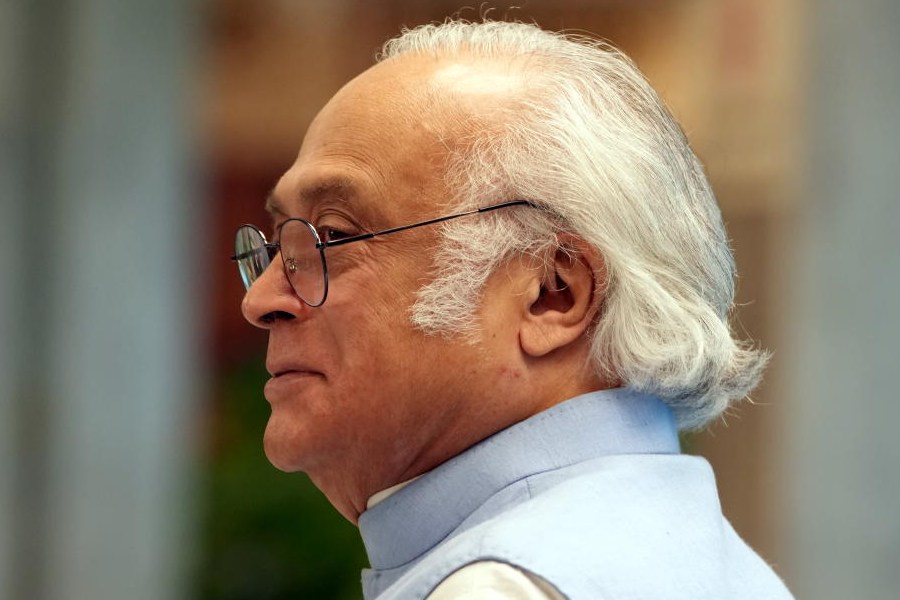 |
 |
| The Pampa lake before and after the ASI team worked on it. Upasana Griha or Glass Temple pre and post restoration |
The city branch of the Archaeological Survey of India (ASI) has completed the restoration of eight Santiniketan landmarks with funds granted by the Centre for Rabindranath Tagore’s 150th birth anniversary celebrations.
The work is part of an ongoing project covering 27 buildings and lakes that are part of the Tagore heritage. It started in 2007 but was dragging because of paucity of resources.
“The ASI had worked on the Konark building at Santiniketan in 2001-02. For the current project, we have had to scour the country for a wide range of materials and technical assistance,” said Tapanjyoti Baidya, superintendent archaeologist, ASI, Calcutta.
“The governments of India and Bangladesh feel four important sites connected with Tagore — Jorasanko, Santiniketan, the Kuthibaris at Shilaidah and Shahjadpur — should be part of a tour package. We are trying our best to restore and improve the heritage structures of the two sites here,” said Jawhar Sircar, the Union secretary for culture.
“Visva-Bharati had been seeking the ASI-protected monument status without realising how many restrictions come with the tag. So once the expert committee had identified the heritage zones, we suggested that the university instead engage the ASI in the conservation project,” Sircar explained.
Nearly Rs 4.8 crore granted by his department for “mural restoration and structural and horticultural conservation” has allowed the work on Santiniketan Griha, Glass Temple, Taladhwaja, Pampa Lake, Lily Pool, Chitrabhanu, Guhaghar, Parishista, Udichi, Dinantika, Dwija-Birama and Malancha to be completed. Santoshalaya, Pathabhavana, Dehali, Nandalal Bose’s Studio, Havel Hall, Sriniketan Fresco, Surul Kuthi (Kuthibari), Shyamali, and other structures are being restored now. The project is expected to be completed by next year.
“Santiniketan was the seat of an avant-garde architectural movement in the early 20th century. When the rest of the country was largely conforming to British colonial architectural prototypes, Tagore and his associates travelled extensively and drew inspiration from sources as varied as the ancient rock-cut architecture of the Buddhist period, mud dwellings of rural India, medieval Indo-Islamic architecture and Japanese and Far Eastern architecture,” said Udaya Narayana Singh, the pro-vice chancellor of Visva-Bharati.
 |
 |
| Upasana Griha or Glass Temple pre and post restoration |
Years of neglect, slipshod repairs and cleaning efforts had taken a toll on most of the structures. Several murals had received splashes of whitewash during sprucing up for celebrations, electric lines had been drawn across walls disregarding the damage to artworks, and lime-mortar and mud walls, like the ones in Taladhwaja, had been repaired with concrete, trapping in the damp. Plants and rubbish had overrun Pampa lake and lily pool.
Santiniketan Griha — the colonial-style residence of Maharshi Debendranath Tagore, built between 1858 and 1863 and used by various members of the family, including Rabindranath — had long and wide cracks on the walls, roof and floors. Pillars had become unstable.
“After assessing the damage, we took steps to strengthen the structure. Labourers skilled in working with traditional lime-sand-mortar were brought from Murshidabad. Fresh lime concrete prepared with herbal glues and waterproofing material like khayer were laid over fired clay tiles and beaten by hand for seven days to make the surface durable,” explained Baidya.
Glass Temple or Upasana Griha, built in 1890 and dedicated to the worship of Brahma, was also in a bad shape. Its walls comprise cast iron frames with coloured and decorative Belgian glass to allow light to enter from all sides and create patterns on the white marble floor. Rainwater was pouring in through cracks in the tiled roof, the marble floor and red sandstone verandah were damaged and several glass pieces were missing.
“Labourers from Surul and Labpur used herbal detergents to clean the intact tiles. We were lucky to find people who could reproduce the cast iron bits and identical clay tiles. We acquired Belgian glass and got slate tiles from a quarry in Andhra Pradesh,” said Baidya.
“To restore the walls of Taladhwaja, we mixed three kinds of mud from Malbhum Purulia with burnt banana skin, crushed tamarind seed, pottery, chopped jute, cowdung and other materials. Special straw for thatching was brought from Naihati. We used some transparent fibreglass to protect the structure from leaks,” said Sekhar Dutta, a senior conservation assistant in charge of the ongoing work.
The lily pool has been cleaned, restored and redecorated with foliage. The Pampa lake with its water-spouting fish was a tougher challenge. Those who had tried to restore it earlier, including a Japanese team, had failed but the ASI claims success.
“The project is important not only because it is Tagore’s 150th birth anniversary but also because Santiniketan has applied to Unesco for world heritage status and has to conform to its norms,” said Gautam Sengupta, director-general, ASI.










